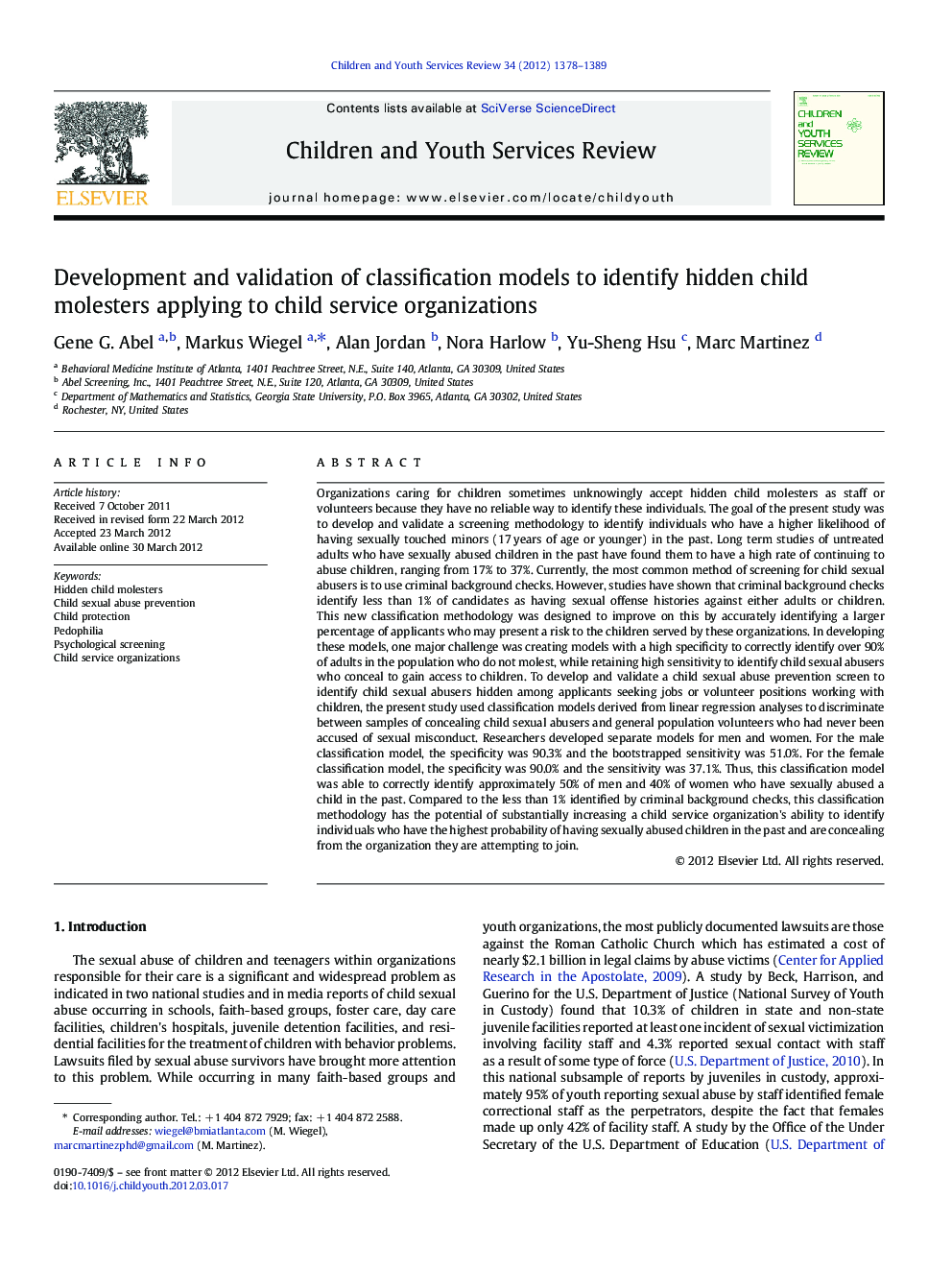| Article ID | Journal | Published Year | Pages | File Type |
|---|---|---|---|---|
| 346470 | Children and Youth Services Review | 2012 | 12 Pages |
Organizations caring for children sometimes unknowingly accept hidden child molesters as staff or volunteers because they have no reliable way to identify these individuals. The goal of the present study was to develop and validate a screening methodology to identify individuals who have a higher likelihood of having sexually touched minors (17 years of age or younger) in the past. Long term studies of untreated adults who have sexually abused children in the past have found them to have a high rate of continuing to abuse children, ranging from 17% to 37%. Currently, the most common method of screening for child sexual abusers is to use criminal background checks. However, studies have shown that criminal background checks identify less than 1% of candidates as having sexual offense histories against either adults or children. This new classification methodology was designed to improve on this by accurately identifying a larger percentage of applicants who may present a risk to the children served by these organizations. In developing these models, one major challenge was creating models with a high specificity to correctly identify over 90% of adults in the population who do not molest, while retaining high sensitivity to identify child sexual abusers who conceal to gain access to children. To develop and validate a child sexual abuse prevention screen to identify child sexual abusers hidden among applicants seeking jobs or volunteer positions working with children, the present study used classification models derived from linear regression analyses to discriminate between samples of concealing child sexual abusers and general population volunteers who had never been accused of sexual misconduct. Researchers developed separate models for men and women. For the male classification model, the specificity was 90.3% and the bootstrapped sensitivity was 51.0%. For the female classification model, the specificity was 90.0% and the sensitivity was 37.1%. Thus, this classification model was able to correctly identify approximately 50% of men and 40% of women who have sexually abused a child in the past. Compared to the less than 1% identified by criminal background checks, this classification methodology has the potential of substantially increasing a child service organization's ability to identify individuals who have the highest probability of having sexually abused children in the past and are concealing from the organization they are attempting to join.
► Two statistical models were developed to identify hidden child molesters. ► The male classification model had a specificity of .90 and a sensitivity of .51. ► The female classification model had a specificity of .90 and a sensitivity of .37. ► Both models were free of race and age bias. ► The goal is to develop screening methods based on empirically developed models.
